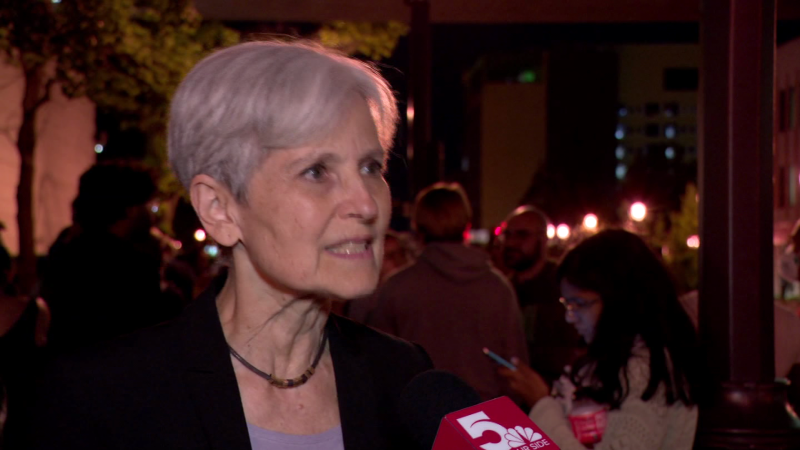Zalckvar, E. & Schuldiner, M. Beyond rare disorders: a new era for peroxisomal pathophysiology. Mol. Cell 82, 2228–2235 (2022).
Ganesan, I., Shi, L. X., Labs, M. & Theg, S. M. Evaluating the functional pore size of chloroplast TOC and TIC protein translocons: import of folded proteins. Plant Cell 30, 2161–2173 (2018).
Walton, P. A., Hill, P. E. & Subramani, S. Import of stably folded proteins into peroxisomes. Mol. Biol. Cell 6, 675–683 (1995).
Meinecke, M. et al. The peroxisomal importomer constitutes a large and highly dynamic pore. Nat. Cell Biol. 12, 273–277 (2010).
Martin, E. W. et al. Valence and patterning of aromatic residues determine the phase behavior of prion-like domains. Science 367, 694–699 (2020).
Wang, J. et al. A molecular grammar governing the driving forces for phase separation of prion-like RNA binding proteins. Cell 174, 688–699 (2018).
Erdmann, R. & Schliebs, W. Peroxisomal matrix protein import: the transient pore model. Nat. Rev. Mol. Cell Biol. 6, 738–742 (2005).
Gatto, G. J. Jr, Geisbrecht, B. V., Gould, S. J. & Berg, J. M. Peroxisomal targeting signal-1 recognition by the TPR domains of human PEX5. Nat. Struct. Biol. 7, 1091–1095 (2000).
Elgersma, Y. et al. The SH3 domain of the Saccharomyces cerevisiae peroxisomal membrane protein Pex13p functions as a docking site for Pex5p, a mobile receptor for the import PTS1-containing proteins. J. Cell Biol. 135, 97–109 (1996).
Erdmann, R. & Blobel, G. Identification of Pex13p a peroxisomal membrane receptor for the PTS1 recognition factor. J. Cell Biol. 135, 111–121 (1996).
Albertini, M. et al. Pex14p, a peroxisomal membrane protein binding both receptors of the two PTS-dependent import pathways. Cell 89, 83–92 (1997).
Brocard, C., Lametschwandtner, G., Koudelka, R. & Hartig, A. Pex14p is a member of the protein linkage map of Pex5p. EMBO J. 16, 5491–5500 (1997).
Francisco, T. et al. Protein transport into peroxisomes: knowns and unknowns. Bioessays https://doi.org/10.1002/bies.201700047 (2017).
Frey, S., Richter, R. P. & Görlich, D. FG-rich repeats of nuclear pore proteins form a three-dimensional meshwork with hydrogel-like properties. Science 314, 815–817 (2006).
Celetti, G. et al. The liquid state of FG-nucleoporins mimics permeability barrier properties of nuclear pore complexes. J. Cell Biol. https://doi.org/10.1083/jcb.201907157 (2020).
Paci, G., Caria, J. & Lemke, E. A. Cargo transport through the nuclear pore complex at a glance. J. Cell Sci. 134, jcs247874 (2021).
Barros-Barbosa, A. et al. The intrinsically disordered nature of the peroxisomal protein translocation machinery. FEBS J. 286, 24–38 (2019).
Emmanouilidis, L., Gopalswamy, M., Passon, D. M., Wilmanns, M. & Sattler, M. Structural biology of the import pathways of peroxisomal matrix proteins. Biochim. Biophys. Acta 1863, 804–813 (2016).
Gould, S. J. & Collins, C. S. Opinion: peroxisomal-protein import: is it really that complex. Nat. Rev. Mol. Cell Biol. 3, 382–389 (2002).
Carvalho, A. F. et al. The N-terminal half of the peroxisomal cycling receptor Pex5p is a natively unfolded domain. J. Mol. Biol. 356, 864–875 (2006).
Lancaster, A. K., Nutter-Upham, A., Lindquist, S. & King, O. D. PLAAC: a web and command-line application to identify proteins with prion-like amino acid composition. Bioinformatics 30, 2501–2502 (2014).
Hoepfner, D., van den Berg, M., Philippsen, P., Tabak, H. F. & Hettema, E. H. A role for Vps1p, actin, and the Myo2p motor in peroxisome abundance and inheritance in Saccharomyces cerevisiae. J. Cell Biol. 155, 979–990 (2001).
Yofe, I. et al. Pex35 is a regulator of peroxisome abundance. J. Cell Sci. 130, 791–804 (2017).
DeLoache, W. C., Russ, Z. N. & Dueber, J. E. Towards repurposing the yeast peroxisome for compartmentalizing heterologous metabolic pathways. Nat. Commun. 7, 11152 (2016).
Bremer, A. et al. Deciphering how naturally occurring sequence features impact the phase behaviours of disordered prion-like domains. Nat. Chem. 14, 196–207 (2022).
Huh, W. K. et al. Global analysis of protein localization in budding yeast. Nature 425, 686–691 (2003).
Nishimasu, H. et al. Crystal structure of Cas9 in complex with guide RNA and target DNA. Cell 156, 935–949 (2014).
Bergeron-Sandoval, L. P. et al. Endocytic proteins with prion-like domains form viscoelastic condensates that enable membrane remodeling. Proc. Natl Acad. Sci. USA https://doi.org/10.1073/pnas.2113789118 (2021).
Cooper, J. T. & Harris, J. M. Imaging fluorescence-correlation spectroscopy for measuring fast surface diffusion at liquid/solid interfaces. Anal. Chem. 86, 7618–7626 (2014).
Singh, A. P. & Wohland, T. Applications of imaging fluorescence correlation spectroscopy. Curr. Opin. Chem. Biol. 20, 29–35 (2014).
Shuang, B., Chen, J., Kisley, L. & Landes, C. F. Troika of single particle tracking programing: SNR enhancement, particle identification, and mapping. Phys. Chem. Chem. Phys. 16, 624–634 (2014).
Slaughter, B. D., Schwartz, J. W. & Li, R. Mapping dynamic protein interactions in MAP kinase signaling using live-cell fluorescence fluctuation spectroscopy and imaging. Proc. Natl Acad. Sci. USA 104, 20320–20325 (2007).
Cherry, J. M. et al. Saccharomyces Genome Database: the genomics resource of budding yeast. Nucleic Acids Res. 40, D700–705 (2012).
Bacia, K., Kim, S. A. & Schwille, P. Fluorescence cross-correlation spectroscopy in living cells. Nat. Methods 3, 83–89 (2006).
Kisley, L. et al. Characterization of porous materials by fluorescence correlation spectroscopy super-resolution optical fluctuation imaging. ACS Nano 9, 9158–9166 (2015).
Ouyang, M. et al. Liquid-liquid phase transition drives intra-chloroplast cargo sorting. Cell 180, 1144–1159 (2020).
Gould, S. J. et al. Pex13p is an SH3 protein of the peroxisome membrane and a docking factor for the predominantly cytoplasmic PTs1 receptor. J. Cell Biol. 135, 85–95 (1996).
Girzalsky, W. et al. Involvement of Pex13p in Pex14p localization and peroxisomal targeting signal 2-dependent protein import into peroxisomes. J. Cell Biol. 144, 1151–1162 (1999).
Kerssen, D. et al. Membrane association of the cycling peroxisome import receptor Pex5p. J. Biol. Chem. 281, 27003–27015 (2006).
Banjade, S. & Rosen, M. K. Phase transitions of multivalent proteins can promote clustering of membrane receptors. Elife 3, e04123 (2014).
Gaussmann, S. et al. Membrane interactions of the peroxisomal proteins PEX5 and PEX14. Front. Cell Dev. Biol. 9, 651449 (2021).
Feng, P. et al. A peroxisomal ubiquitin ligase complex forms a retrotranslocation channel. Nature 607, 374–380 (2022).
Pedrosa, A. G. et al. Peroxisomal monoubiquitinated PEX5 interacts with the AAA ATPases PEX1 and PEX6 and is unfolded during its dislocation into the cytosol. J. Biol. Chem. 293, 11553–11563 (2018).
Gao, Y., Skowyra, M. L., Feng, P. & Rapoport, T. A. Protein import into peroxisomes occurs through a nuclear pore-like phase. Science 378, eadf3971 (2022).
Lazard, M., Blanquet, S., Fisicaro, P., Labarraque, G. & Plateau, P. Uptake of selenite by Saccharomyces cerevisiae involves the high and low affinity orthophosphate transporters. J. Biol. Chem. 285, 32029–32037 (2010).
Felice, M. R. et al. Post-transcriptional regulation of the yeast high affinity iron transport system. J. Biol. Chem. 280, 22181–22190 (2005).
Salomons, F. A., Kiel, J. A., Faber, K. N., Veenhuis, M. & van der Klei, I. J. Overproduction of Pex5p stimulates import of alcohol oxidase and dihydroxyacetone synthase in a Hansenula polymorpha Pex14 null mutant. J. Biol. Chem. 275, 12603–12611 (2000).
Steinberg, S. et al. The PEX Gene Screen: molecular diagnosis of peroxisome biogenesis disorders in the Zellweger syndrome spectrum. Mol. Genet. Metab. 83, 252–263 (2004).
Ebberink, M. S. et al. Genetic classification and mutational spectrum of more than 600 patients with a Zellweger syndrome spectrum disorder. Hum. Mutat. 32, 59–69 (2011).
Jansen, R. L. M., Santana-Molina, C., van den Noort, M., Devos, D. P. & van der Klei, I. J. Comparative genomics of peroxisome biogenesis proteins: making sense of the PEX proteins. Front. Cell Dev. Biol. 9, 654163 (2021).
Yofe, I. et al. One library to make them all: streamlining the creation of yeast libraries via a SWAp-Tag strategy. Nat. Methods 13, 371–378 (2016).
Sherman, F. Getting started with yeast. Methods Enzymol. 194, 3–21 (1991).
Shaw, W. M. et al. Engineering a model cell for rational tuning of GPCR signaling. Cell 177, 782–796 (2019).
Davis, N. G., Horecka, J. L. & Sprague, G. F. Jr. Cis- and trans-acting functions required for endocytosis of the yeast pheromone receptors. J. Cell Biol. 122, 53–65 (1993).
Mascle, X. H. et al. Acetylation of SUMO1 alters interactions with the SIMs of PML and Daxx in a protein-specific manner. Structure 28 157–168 (2020).
Ceballos, A. V., McDonald, C. J. & Elbaum-Garfinkle, S. Methods and strategies to quantify phase separation of disordered proteins. Methods Enzymol. 611, 31–50 (2018).
Schindelin, J. et al. Fiji: an open-source platform for biological-image analysis. Nat. Methods 9, 676–682 (2012).
Kisley L. PeroxisomeCorrelationMain_LK20221006.m Zenodo https://doi.org/10.5281/zenodo.7702794 (2023).
Xavier-Castellanos-Girouard. Xavier-Castellanos-Girouard/Peroxisome-biogenesis-initiated-by-protein-phase-separation: Droplet_Fusion v0.1. Zenodo https://doi.org/10.5281/zenodo.7702890 (2023).







More News
Daily briefing: The origins of bioluminescence in animals date back over half a billion years
Daily briefing: How an unlikely friendship with Jung influenced Pauli’s physics
Audio long read: Why loneliness is bad for your health